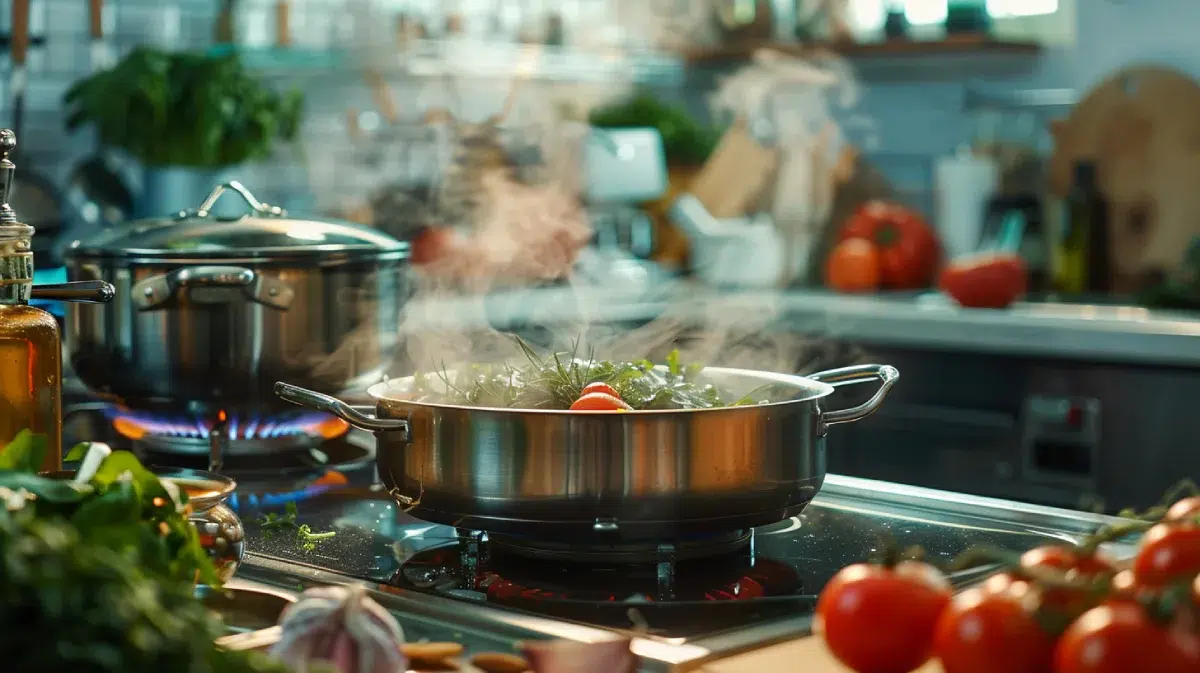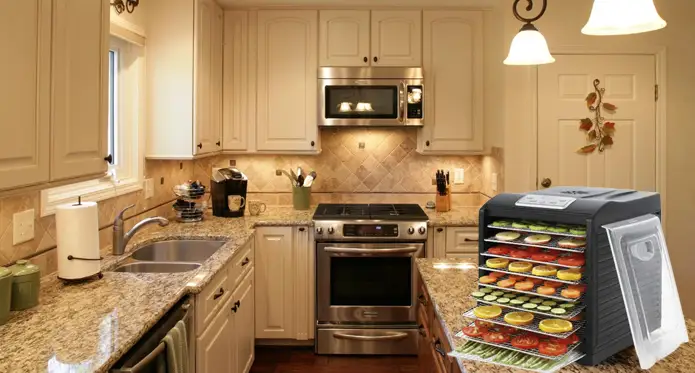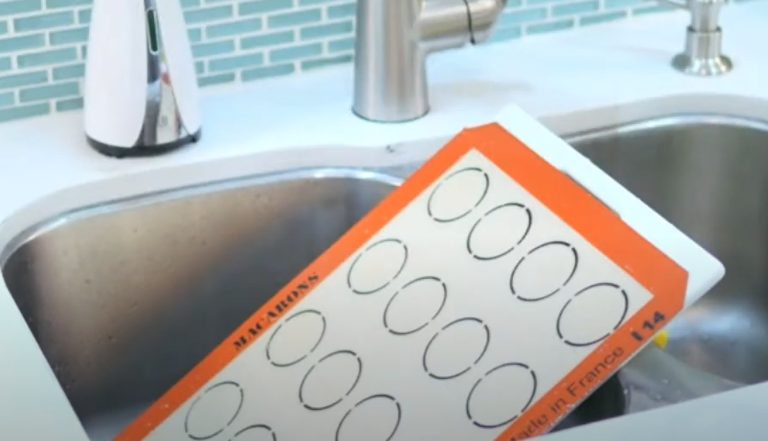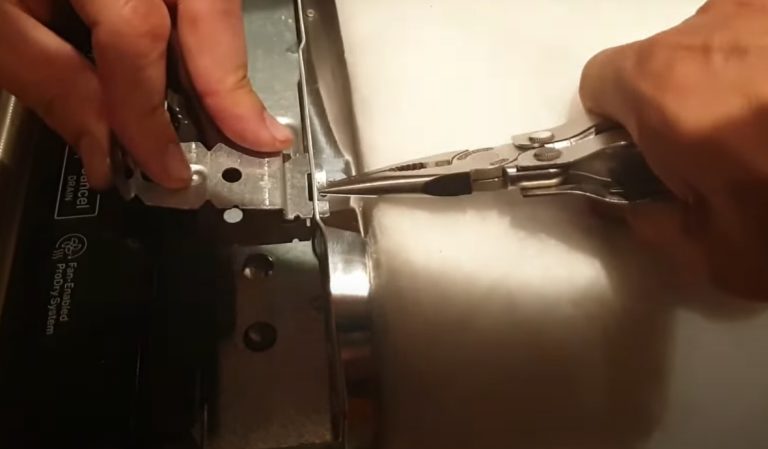Saucier Vs Saucepan: Cookware Showdown
Understanding the difference between a saucier and a saucepan can elevate your cooking techniques.
A saucier, with its rounded sides, excels in making delicate sauces and reductions due to improved stirring access and even heat distribution. Meanwhile, a saucepan, featuring straight sides, is ideal for boiling water, cooking pasta, and preparing soups—tasks requiring more volume.
Both benefit from stainless steel‘s excellent heat conduction. For constant whisking, the ergonomic design of a saucier is unmatched. If you’re managing larger volumes, a saucepan’s wide diameter and high sides perform best. Armed with these distinctions, your choice of cookware can be more precise.
Key Takeaways
- Sauciers have rounded sides for easier stirring; saucepans have straight sides for versatile cooking.
- Sauciers excel at reducing sauces; saucepans are ideal for boiling and simmering.
- Sauciers offer larger surface area for faster reduction; saucepans provide high sides to prevent spills.
- Sauciers are favored in professional kitchens for delicate sauces; saucepans are common in home kitchens for various tasks.
- Sauciers’ rounded bottoms aid in liquid retention; saucepans’ flared rims and wide diameters enhance versatility.
Spot the Difference
When comparing a saucier and a saucepan, you’ll notice that sauciers have rounded sides while saucepans feature straight sides. This fundamental design difference plays an important role in their functionality.
Sauciers, with their rounded sides, excel at tasks requiring constant stirring and whisking, such as making delicate sauces or custards. The curvature eliminates corners where ingredients can get trapped, ensuring smooth, even stirring.
On the other hand, saucepans are designed with high, straight sides, which make them perfect for tasks like boiling water or cooking pasta. The tall sides help prevent spills and splatters, making saucepans ideal for liquid-heavy applications. However, their straight-sided design can hinder stirring and whisking, as ingredients tend to accumulate in the corners.
Sauciers offer a larger surface area due to their broader top and rounded sides, which facilitates faster reduction of sauces. This makes them exceptionally versatile, capable of performing most tasks a saucepan can, and more. Typically, sauciers range from two to five quarts, while saucepans are available from one to six quarts.
Understanding these distinctions in the saucier vs. saucepan debate will help you select the right tool for your culinary needs.
Material and Performance
When choosing between a saucier and a saucepan, consider the benefits of stainless steel, particularly in tri-ply construction for ideal heat conduction.
Prioritize handle and diameter preferences: a rounded handle offers comfort for saucepans, while sauciers benefit from a generous surface area and balanced weight for precise control.
Both options often include lids to enhance their versatility in your culinary tasks.
Stainless Steel Benefits
Stainless steel’s tri-ply construction guarantees superior heat distribution, making it an ideal choice for both sauciers and saucepans. A stainless steel saucepan benefits from even heating, ensuring that your soups and stews cook uniformly.
On the other hand, sauciers feature rounded edges, which facilitate constant stirring and prevent ingredients from sticking to corners during the cooking process. This design is particularly advantageous when making delicate sauces that require precision and frequent attention.
For advanced culinary techniques, stainless steel’s durability stands out. The tri-ply construction, which usually includes an aluminum core sandwiched between stainless steel layers, ensures that heat is conducted efficiently across the entire cooking surface. This allows both sauciers and saucepans to maintain consistent temperatures, essential for complex recipes.
When choosing between a stainless steel saucepan and a saucier, consider your cooking style. If you frequently prepare dishes requiring large volumes of liquid, a saucepan’s wider diameter and rounded handle offer comfort and control.
Conversely, if your focus is on sauces and reductions, the saucier’s generous surface area and just-right weight provide the perfect environment for meticulous cooking. Both options promise longevity and performance, enhancing your kitchen’s capabilities.
Tri-Ply Heat Conduction
Tri-ply construction offers unmatched heat conduction, guaranteeing both sauciers and saucepans deliver consistent cooking results. When you’re selecting cookware, understanding the benefits of tri-ply construction is essential. This design features layers of stainless steel and aluminum, providing exceptional heat distribution and retention. Here’s why you should consider tri-ply cookware:
- Efficient heat conduction: Tri-ply construction allows for quick and even heating, eliminating hot spots and ensuring your saucier or saucepan performs at its best.
- Versatility: Whether you’re making delicate sauces in a saucier or boiling pasta in a saucepan, tri-ply construction enhances your cooking experience by offering superior control.
- Durability: The stainless steel layers in tri-ply cookware resist corrosion and wear, making your investment long-lasting and reliable.
For even cooking, tri-ply construction is essential. The aluminum core conducts heat quickly and uniformly, while the stainless steel layers provide a sturdy, non-reactive surface. This combination is ideal for the precise temperature control needed in reducing sauces or achieving a perfect simmer.
Whether you’re using a saucier for its rounded sides that facilitate easy stirring or a saucepan for its broader diameter, tri-ply construction ensures your dishes are cooked perfectly.
Handle and Diameter Preferences
Choosing between a saucier and a saucepan hinges on understanding the distinct advantages each offers regarding handle ergonomics and diameter functionality. When considering handle and diameter preferences, a saucier typically features a more rounded and ergonomic handle, enabling easy stirring and maneuvering. This is particularly beneficial when preparing sauces that require constant attention and fluid motion.
On the other hand, a saucepan often provides a wider diameter, offering a larger cooking surface area, ideal for tasks like boiling water or cooking pasta.
Stainless steel is a preferred material for both saucier and saucepan due to its durability and excellent heat conduction. The saucier’s rounded sides enhance the even distribution of heat, ensuring that your sauces cook uniformly without sticking to the corners. This design also makes it easier to whisk and stir, maintaining a smooth consistency.
In contrast, the saucepan’s straight sides and wide diameter make it versatile for various cooking methods, from simmering soups to reducing stocks. Understanding these handle and diameter preferences will guide you in selecting the right tool tailored to your specific culinary needs, maximizing efficiency and performance in your kitchen.
Pros and Cons
When evaluating the pros and cons of sauciers versus saucepans, it’s important to analyze their design features and specific applications in culinary tasks.
A saucepan, with its high sides, excels at preventing spills, making it a prime choice for boiling water or cooking pasta. By contrast, a saucier’s curved sides facilitate effortless stirring and making sauces, allowing for more even heat distribution and reducing the risk of burning.
Saucepans generally range from one to six quarts, providing versatility for various cooking volumes. Their straight sides and included lids help maintain a stable temperature and contain moisture, making them perfect for simmering soups or cooking grains. However, the taller profile can make stirring cumbersome, potentially leading to uneven cooking.
Saucier pans, typically available in sizes from two to five quarts and also equipped with lids, offer a shallower profile with rounded sides. This design is ideal for tasks requiring constant movement, like whisking or reducing sauces, as it allows for easy access to all ingredients.
Consider the following:
- Efficiency: Sauciers provide superior heat distribution for delicate sauces, while saucepans excel in volume cooking.
- Versatility: Saucepans are more versatile for boiling and simmering.
- Ease of use: Saucier’s curved sides make stirring and whisking easier.
Which One Is Better?
Evaluating the merits of sauciers and saucepans reveals that each excels in specific culinary tasks, but the saucier’s versatility often gives it an edge for serious home cooks and professional chefs alike.
Saucier pans, with their rounded bottoms and sloped sides, offer a larger cooking surface that facilitates even heat distribution, making them ideal for reducing sauces. This design also allows for easier stirring and whisking, ensuring a smoother, more consistent texture for delicate preparations.
While saucepans are straightforward and excellent for boiling and simmering, their straight sides can hinder the thorough mixing required for certain recipes. Sauciers, on the other hand, excel in tasks that demand precision and constant movement, such as making custards, risottos, and emulsified sauces like hollandaise.
Your choice between sauciers and saucepans ultimately hinges on your personal preferences and cooking needs. If you frequently engage in advanced culinary techniques, a saucier’s versatility makes it a superior investment. It can handle everything a saucepan does while offering enhanced functionality for more nuanced tasks.
For those focused on a wider array of cooking applications, the saucier’s design and larger cooking surface make it indispensable in any kitchen.
Favorite Saucier
- Total Diameter: 10” | Cooking Surface Diameter: 7 | Height (with handle): 4.5” | Depth: 3.5” |…
- Essential for Every Kitchen – The Made In Stainless Clad Sauce Pan is a must-have kitchen tool,…
- Superior Quality – Made from 5 layers of premium metal for professional-quality heat distribution
Why does the Made In Stainless Clad Saucier stand out as a top choice among culinary professionals and home cooks alike? The answer lies in its exceptional design and performance features.
This saucier is renowned for its superb heat conduction due to its stainless-clad construction, ensuring even cooking and preventing hotspots. The 3-quart size is recommended, offering versatility and an ideal surface area for various recipes.
Its well-balanced design promotes ease of stirring and whisking, making it your go-to for sauces, risottos, and custards. The rounded bottom and sloped sides facilitate thorough mixing, eliminating the frustration of ingredients sticking to corners.
Efficient Heat Conduction: The stainless-clad material distributes heat evenly, essential for precise temperature control.
Enhanced Stirring and Whisking: The ergonomic design allows for seamless stirring and whisking, important for delicate sauces and emulsions.
Generous Surface Area: Offers ample space for reducing sauces and cooking evenly, enhancing flavor development.
Choosing the Made In Stainless Clad Saucier means investing in a reliable, versatile piece of cookware that elevates your culinary skills. Its thoughtful design and superior materials make it a favorite among those serious about their cooking.
Favorite Saucepans
- 3-ply construction from rim to rim – 3mm, Thick aluminum core conducts heat quickly and evenly
- Nonstick ceramic coating is environmentally friendly – no harmful fumes are released into the…
- Large, stay-cool loop handles designed for easy maneuvering and control while wearing oven mitts
When selecting a top-tier saucepan, examine the Zwilling Spirit 3-ply Stainless Steel 4-Quart for its flared rim and cool-touch handle, ensuring effortless stirring and safe handling.
The practical interior measurement markings and a glass lid further enhance its utility.
For budget-conscious cooks, the Tramontina Covered Sauce Pan with Helper Handle offers versatility without compromising on performance.
Top Picks Overview
Among the top picks for saucepans, the Zwilling Spirit 3-ply Stainless Steel 4-Quart and the Tramontina Covered Sauce Pan with Helper Handle stand out for their superior design and affordability.
When deciding between a saucier and a saucepan, you’ll appreciate the Zwilling for its flared rims, which simplify stirring and pouring. The comfortable handles stay cool, providing a secure grip even when full. Plus, you’ll love the interior measurement markings and the glass lid, which allow for precise cooking without lifting the cover.
On the other hand, the Tramontina Covered Sauce Pan with Helper Handle is a budget-friendly choice that doesn’t compromise on quality. This saucepan is designed with durability in mind, making it a reliable addition to any kitchen.
Here are some key considerations:
- Flared rims: Ideal for easy pouring and stirring.
- Comfortable handles: Secure a steady grip and safe handling.
- Measurement markings and glass lid: Offer accuracy and convenience during cooking.
Whether you’re a seasoned chef or a home cook, these saucepans offer practical features and excellent performance. Choose the Zwilling for advanced features or the Tramontina for a cost-effective, high-quality option.
Key Features Highlighted
Highlighting the key features of our favorite saucepans, you’ll find that both the Zwilling Spirit and Tramontina models excel in design, functionality, and value.
The Zwilling Spirit 3-ply Stainless Steel 4-Quart Saucepan stands out with its flared rim, facilitating drip-free pouring, and a comfortable handle that guarantees a secure grip. The interior measurement markings are particularly useful for precision cooking. This model is among the best pans for ensuring even heat distribution and retention, critical for consistent results.
On the other hand, the Tramontina Covered Sauce Pan with Helper Handle is a budget-friendly option without compromising reliability. Its high sides prevent spills, making it ideal for simmering and boiling. The helper handle provides additional stability, especially when dealing with larger quantities.
When deliberating between sauciers and saucepans, note that sauciers feature a rounded bottom, enhancing the cooking surface area and making them perfect for whisking and stirring. This makes using a saucier particularly effective for sauces and custards.
Both types usually include lids, which are essential for maintaining moisture and heat retention during cooking. Opt for these models to elevate your culinary techniques with professional-grade results.
Frequently Asked Questions
Can a Saucier Replace a Saucepan?
Absolutely, a saucier can replace a saucepan. You’ll benefit from its curved sides which enhance stirring and whisking efficiency, making it perfect for liquids and sauces. This choice maximizes your cooking potential and overall kitchen versatility.
What Are Saucier Pans Used For?
You’ll use saucier pans for making delicate sauces, frequent stirring tasks like risotto, reducing liquids for concentrated flavors, finishing pasta dishes with even coating, and any cooking requiring precise heat control and gentle techniques.
Can You Boil Water in a Saucier?
Absolutely, you can boil water in a saucier. Its distinctive rounded bottom guarantees even heat distribution, like a symphony of warmth, making it an efficient tool for boiling water quickly and evenly.
Can You Boil Pasta in a Saucier?
Yes, you can boil pasta in a saucier. Its wide surface area and curved sides guarantee even cooking and efficient stirring. Use it for uniform heat distribution, making your pasta cooking process smooth and precise.
Culinary Needs Decoded: The Ideal Choice Between Saucier and Saucepan
Ultimately, choosing between a saucier and a saucepan depends on your culinary needs. Picture yourself effortlessly whisking a velvety béchamel in a saucier, its rounded edges making every stir seamless.
Or imagine simmering a hearty stew in a saucepan, its tall, straight sides perfect for even cooking. Both have their unique strengths; your decision hinges on the dishes you love to create.
Invest wisely, and let your cookware elevate your kitchen prowess.
Last update on 2025-12-07 / Affiliate links / Images from Amazon Product Advertising API









